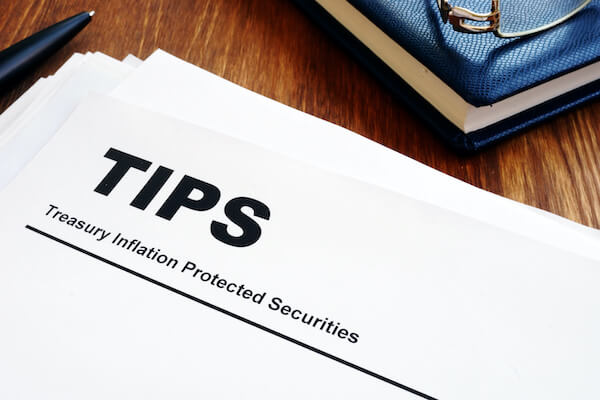
Retirement planning starts with goals. Once you understand the cash flow you will need when you retire, you can start looking for investments that can provide it.
In this article, we’ll go over 12 safe retirement investments, reviewing potential returns and risks. We’ll start with the most conservative investments that have safe, yet low returns and will then move to risker ones that have higher returns.
1. Money Market Accounts
Offered by banks and credit unions, money market accounts (MMAs) offer higher interest rates than a regular savings account. The interest rates for MMAs are based on the rates available in the money market, i.e., the market for short-term debt.
Like other bank accounts, the Federal Deposit Insurance Corporation, or the FDIC, insures MMAs. This means your principal of up to $250,000 (at each bank) is protected.
The main downside of money market accounts is lower flexibility compared to regular bank accounts. There could be restrictions on withdrawals, your minimum balance, and more.
While money market accounts offer higher interest rates than regular saving accounts, the rates are limited by what’s available in the short-term debt market. While interest rates across the world are so low, you shouldn’t expect APY to be above 0.5%.
2. Online Savings Accounts
Online banks have lower operating costs and often offer higher yields for saving accounts. These banks are also FDIC-insured, so the principal is protected.
The main downside is that the highest APYs are usually available under specific conditions. Some banks give the best APYs during intro periods. Others have maximum or minimum account limits. So in the end, the deal might not be as good as it looks at first glance.
3. Cash Management Accounts
Cash management accounts, or CMAs, are similar to bank accounts but are offered by non-bank financial institutions — for example, a brokerage. Usually, these accounts have all the features of bank accounts, like free ATM withdrawals.
While yields for cash management accounts are only slightly higher than saving accounts, you can easily move funds into other investment instruments — for example, stocks or ETFs.
Some CMAs are FDIC-insured and often with even greater limits than the standard $250,000 per depositor for bank accounts. However, it’s important to do your own research into the terms of specific CMAs.
Finally, some CMAs might impose minimum balance limits and various monthly fees. Always read the small print.
4. Certificates of Deposit
Bank certificates of deposit, or CDs, are saving accounts that hold a fixed amount of money for a fixed period. CDs are always insured by the FDIC. Historically, CDs offered higher interest rates than other saving products. Today, that’s mostly no longer the case, but they still remain the most popular financial instrument that provides a guaranteed income.
The main downside of CDs is that if you want to withdraw money early, you’ll have to pay a penalty.
5. Fixed Annuities
Fixed annuities are financial instruments offered by insurance companies and their agents. Essentially, it’s a type of insurance contract that pays a guaranteed income for a certain period or through a lifetime.
Annuities offer significantly higher interest rates. Yet they also force you to lock up money for much longer periods.
6. Treasury Inflation-Protected Securities

Treasury Inflation-Protected Securities, or TIPS, are inflation-protected bonds issued by the U.S. Treasury. It’s a very safe investment favored by many large investors.
The key advantage of TIPS is that they protect your purchasing power. The principal — or the face value of the bond — adjusts based on the Consumer Price Index, or CPI, a measure of inflation. So if inflation rises, the principal goes up. And if consumer prices fall, the principal goes down.
The main risk, however, is that CPI might not adequately reflect inflation. The prices of goods and services that you might need in your retirement might rise faster.
Another risk is price volatility. If you decide to sell TIPS on the market, the prices might be below the face value due to demand and supply.
7. Government Bonds
The U.S. Treasury is not the only issuer of government bonds. State and local governments also issue bonds to raise funds for capital expenditures and other expenses.
While other government and municipal bonds aren’t as safe as U.S. Treasury bonds, the risks of their defaults are very low. So government bonds — either standalone or as part of mutual funds or ETFs — could be a great source of cash flow for retirees.
Despite the lower risk of default, the market value of bonds would drop sharply if interest rates would rise. The idea is simple: If central banks raise key funding rates, investors would sell older bonds at a discount to buy new bonds with higher yields. And given that interest rates across the world are at record lows, the eventual interest rate hike seems inevitable.
8. Corporate Bonds
Bonds issued by companies are riskier than government bonds. On the other hand, corporate bonds have higher yields.
In practice, buying corporate bonds directly would be impossible for most retirees because many of them start as multiples of $100,000.
The solution is bond funds, either as mutual funds or ETFs. These funds also diversify holdings across different companies, decreasing the risks of default.
9. Preferred Stocks
Preferred stocks are a special type of stock that doesn’t have voting rights but does pay dividends.
The dividend, however, is not guaranteed, and in tough times, companies could suspend dividends for both regular and preferred stocks. In practice, this is rare and would mean the company is in serious trouble.
Preferred stocks have higher returns and are still a relatively low-risk investment.
10. Index Funds
Index funds offer exposure to the stock market as a whole. Such funds track the performance of major stock indices, like the S&P 500 or Nasdaq 100.
Investors can invest in index funds either as mutual funds or as ETFs.
The main risk is price volatility. While the index is more stable than individual companies, the prices still fluctuate a lot, especially during difficult times.
11. Dividend-Paying Stocks
Depending on your risk tolerance, dividend stocks could be viewed as a safe retirement investment. While dividends aren’t guaranteed and their sizes vary, dividend yields are far more attractive than any banking product or even bonds.
If you have a well-diversified portfolio, price volatility should not be a concern. If you’re planning for retirement, the goal should be to own long-term stocks that you would be happy to keep forever. Typically, such stocks are a mature business with relatively high payout ratios.
If you’re interested in finding the best dividend-paying stocks, subscribe to Investors Alley’s “Dividend Hunter” newsletter.
12. REITs

Real estate is often perceived as the ultimate safe investment. Yet any homeowner knows that the privilege of owning a property comes with plenty of headaches: repairs, maintenance, and more.
Luckily, real estate investment trusts, or REITs, offer the stability of rental income without the hassle of managing properties. Run by professional management companies, REITs invest in high-quality real estate, either focusing on a specific sector or geography or building a diversified portfolio.
Thanks to their special tax treatment, REITs usually have higher returns than many other stocks. If REITs payout 90% of their taxable income as dividends, they are exempt from corporate taxes.
Build Your Portfolio of Safe Retirement Investments
We’ve now reviewed 12 safe retirement investments. On the safest side are FDIC-insured savings products: money market accounts, online saving accounts, cash management accounts, and CDs. Then, we’ve looked at various fixed income instruments with higher yields: fixed annuities, TIPS, as well as government and corporate bonds. Finally, we’ve briefly reviewed various stocks — these have higher risks and higher returns.
Historically, bank accounts and bonds were the safest retirement investments. Of course, they are still safe today. Yet with today’s rock-bottom yields, they can hardly provide retirement income. Sadly, retirees need to look beyond bank accounts and bonds.





